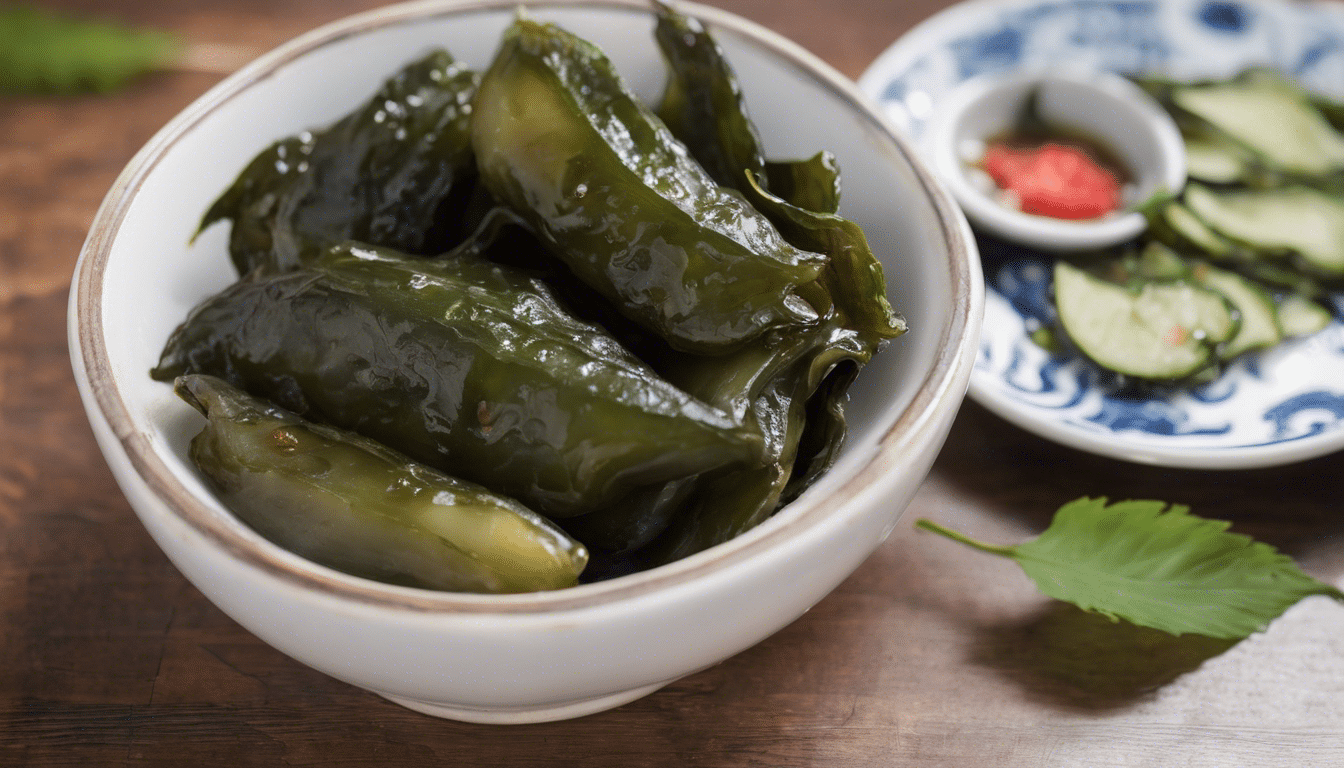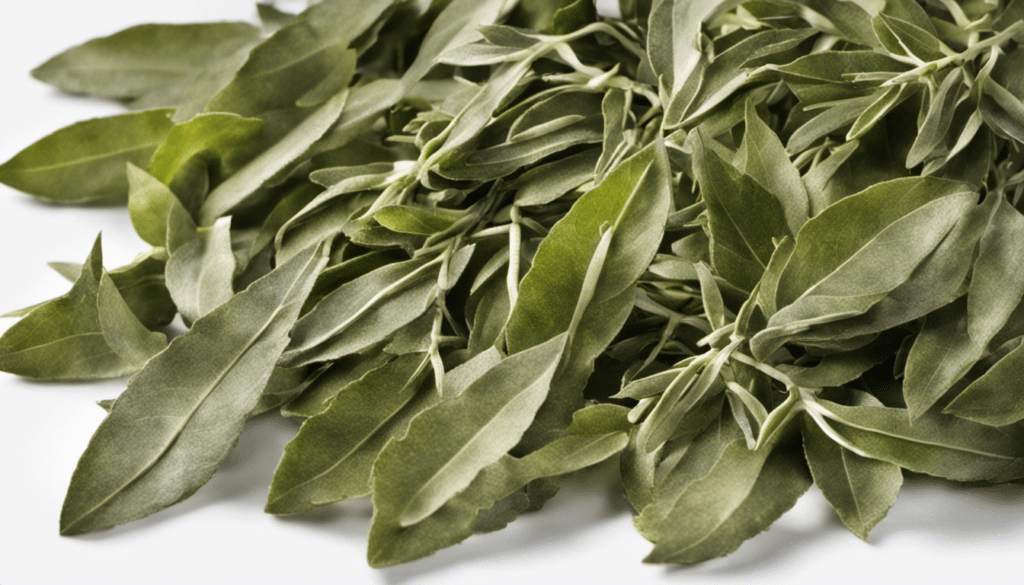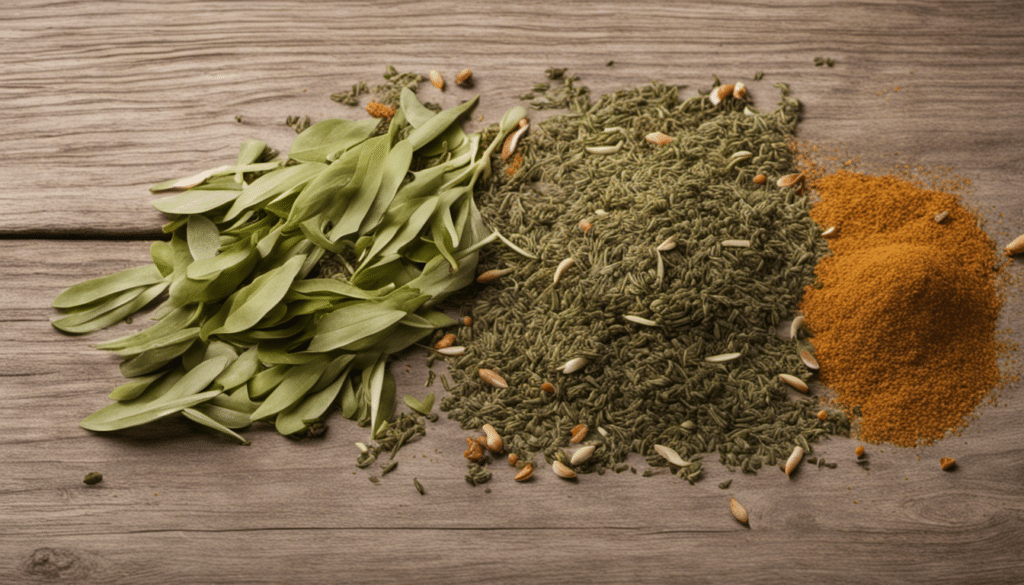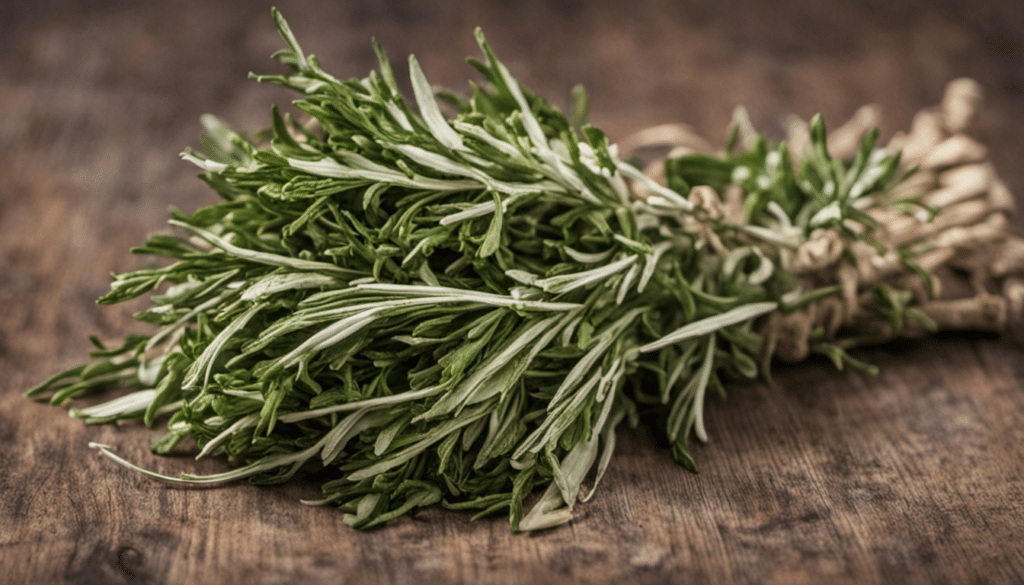| Prep: 20 mins | Cook: 15 mins | Difficulty: Medium | Serves: 6 |
| kcal | fat | saturates | carbs |
| 95 | 1.2g | 0.2g | 18g |
| sugars | fibre | protein | salt |
| 8g | 2g | 4g | 1.7g |
As your Gourmet Guru, I take great pride in sharing distinctive recipes from around the globe. This time, I’ll shine a light on a dish that beautifully marries my gastronomic pursuits and culinary adventures. It’s a fruit-based delight known as Kkaennip Jangajji or Perilla Leaf Pickles – a vibrant medley of flavors that instantly enlivens the taste buds while offering a variety of health benefits.
Kkaennip Jangajji: A Unique Blend of Sweetness and Tang
Not unlike the tacit beauty of my home in the Rockies, the allure of Kkaennip Jangajji lies in its simplicity and elegance. Bearing a striking resemblance to the pickled vegetables that frequently appear on my hearty mountain tables, this Korean delight – with the pop of colorful peppers and thin slices of Korean pear – is an excellent way to introduce new aromas and flavors to familiar foods.
The dish’s base relies on fresh perilla leaves, whose scent is reminiscent of the alpine forests. These leaves contribute a noteworthy portion of the health benefits in this recipe. They’re a great source of antioxidants, known for their anti-inflammatory properties, and can aid digestion. As an outdoor lover, I cherish recipes that incorporate such nutritionally impressive ingredients.
The Perfect Accompaniment to Many Dishes
Kkaennip Jangajji’s delightful duality in flavor, dancing between sweet and salty, makes it an ideal accompaniment to many dishes. Its lightness makes it a delightful companion to game meats like venison or elk stew, a homage to my expertise in game meats. Alternatively, serve it alongside fresh trout, subtly complementing the fish’s delicacy.
For those interested in the traditional Korean experience, Kkaennip Jangajji is commonly paired with Baek Kimchi and steamed rice. This creates a harmonious palette of flavors that characterizes the essence of Korean cuisine.
Guided by my lifelong love for unique experiences and continual explorations, the Kkaennip Jangajji recipe is a beloved addition to my repertoire. I hope this unique recipe, with its blend of sweet and sour, and hints of my familiar terrains, becomes a favorite in your kitchen too.
What You’ll Need
- 2 bunches of fresh perilla leaves (approximately 20 leaves)
- 1 cup of soy sauce
- 1 cup of vinegar
- 1/2 cup of sugar
- 1 cup of water
- 1 tablespoon minced garlic
- 1/2 tablespoon minced ginger
- 1 small onion, thinly sliced
- 2 green chili peppers, thinly sliced
- 1 red chili pepper, thinly sliced
- 1 Korean pear, thinly sliced
Method
Step One
Wash the perilla leaves thoroughly under running water then pat them dry. Set them aside.
Step Two
In a medium size saucepan, add the soy sauce, vinegar, sugar, and water. Stir over medium heat until the sugar is completely dissolved.
Step Three
Add minced garlic and ginger to the saucepan. Bring the mixture to a boil then lower the heat and let it simmer for about 5 minutes. Remove the saucepan from the heat and let it cool completely.
Step Four
While the sauce is cooling, thinly slice the onion, green chili peppers, red chili pepper and Korean pear.
Step Five
Once the sauce is cooled, add the sliced onions, sliced peppers and sliced pear into the sauce and mix well.
Step Six
In a large glass jar or airtight container, start layering the perilla leaves and pour some sauce over each layer until all leaves and sauce are used. Make sure all leaves are submerged in the sauce.
Step Seven
Close the container tightly and let it sit at room temperature for 24 hours. After 24 hours, refrigerate the pickles.
Step Eight
The Perilla Leaf Pickles (Kkaennip Jangajji) are ready to be served after they have been refrigerated for at least 48 hours. The pickles can be stored refrigerated for up to a month.




